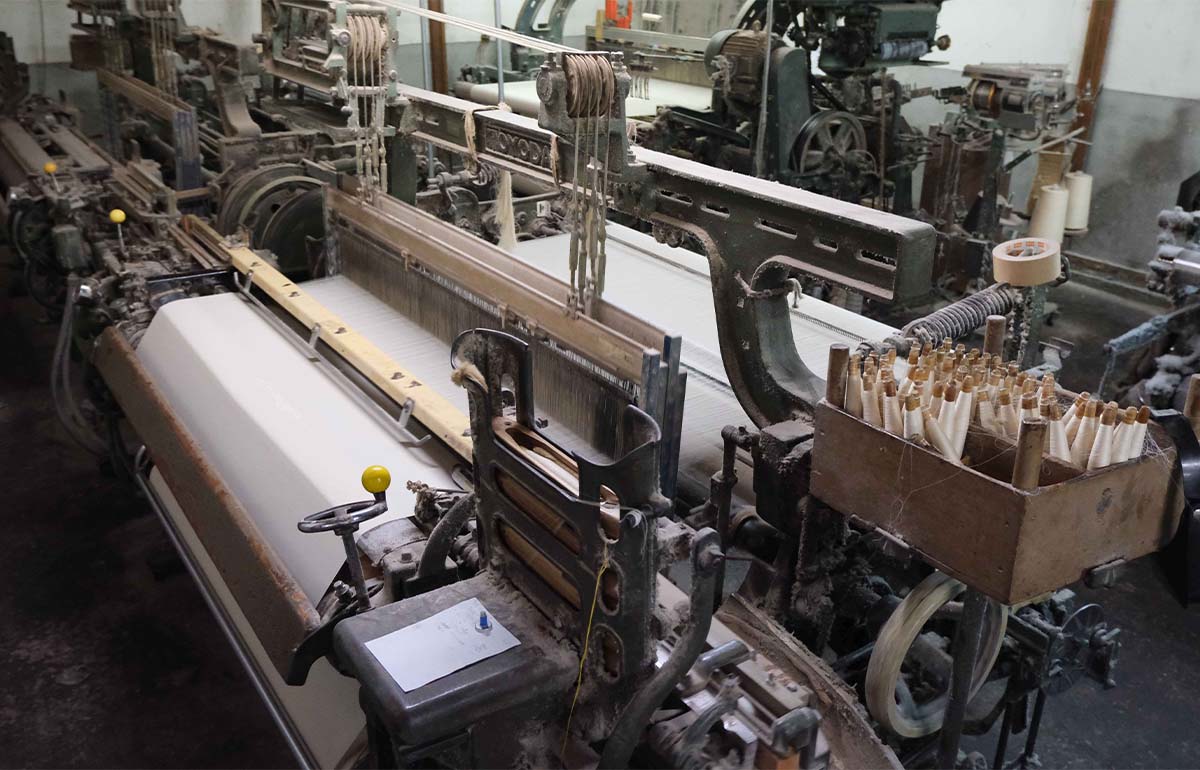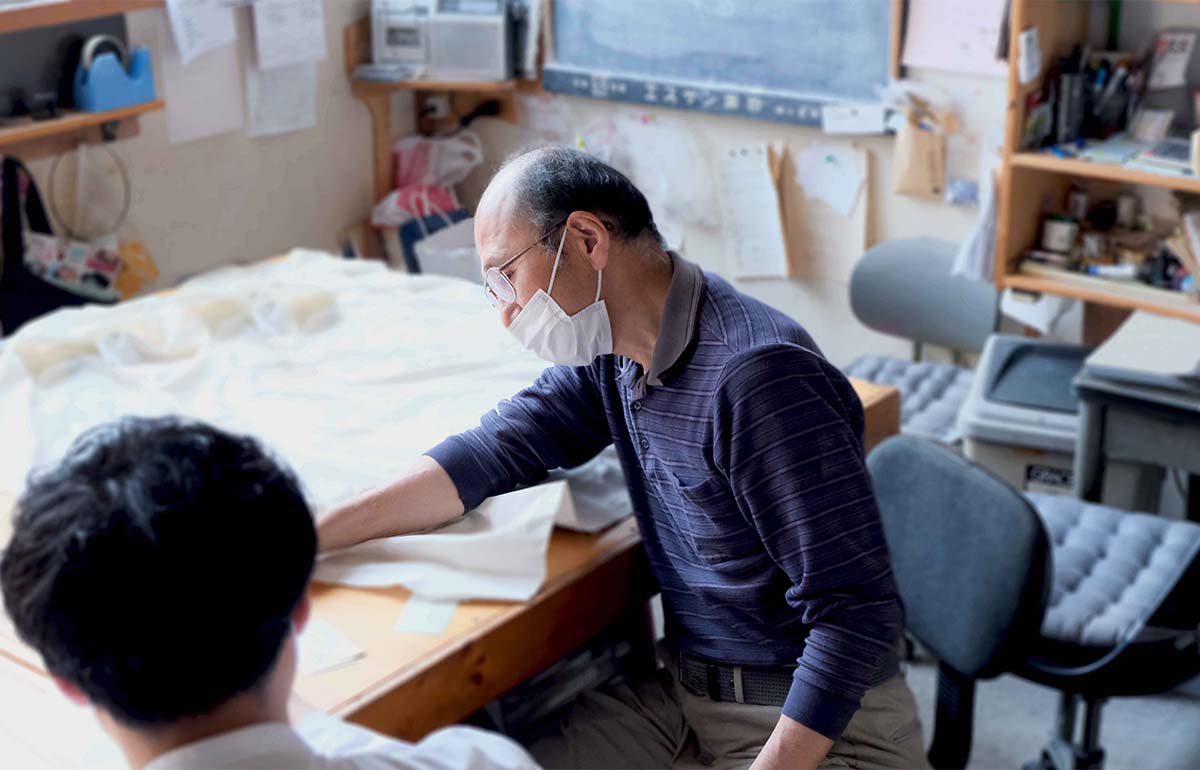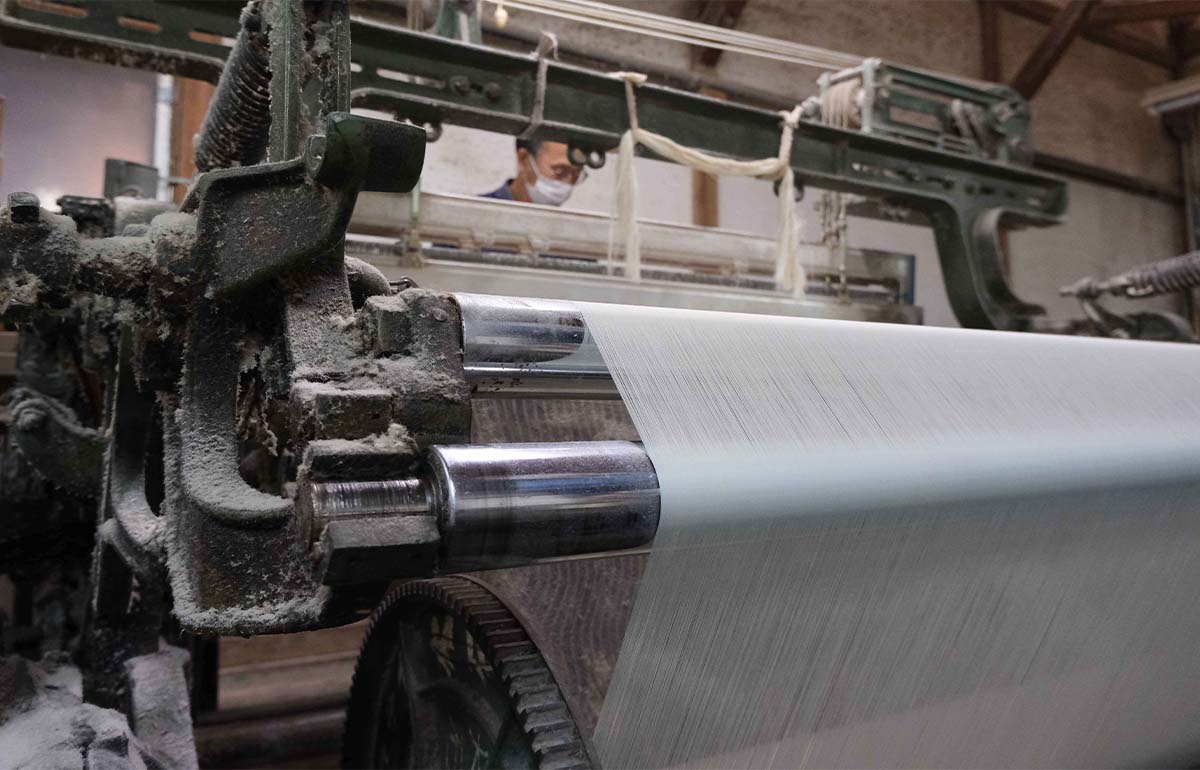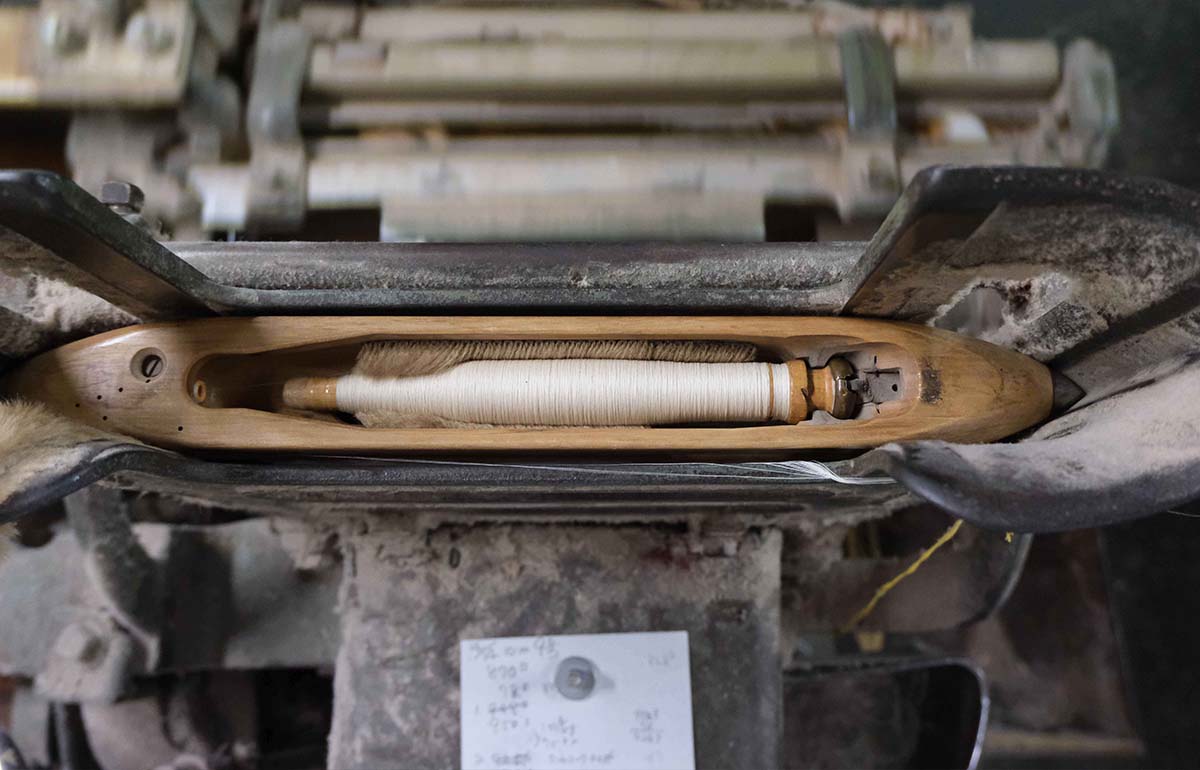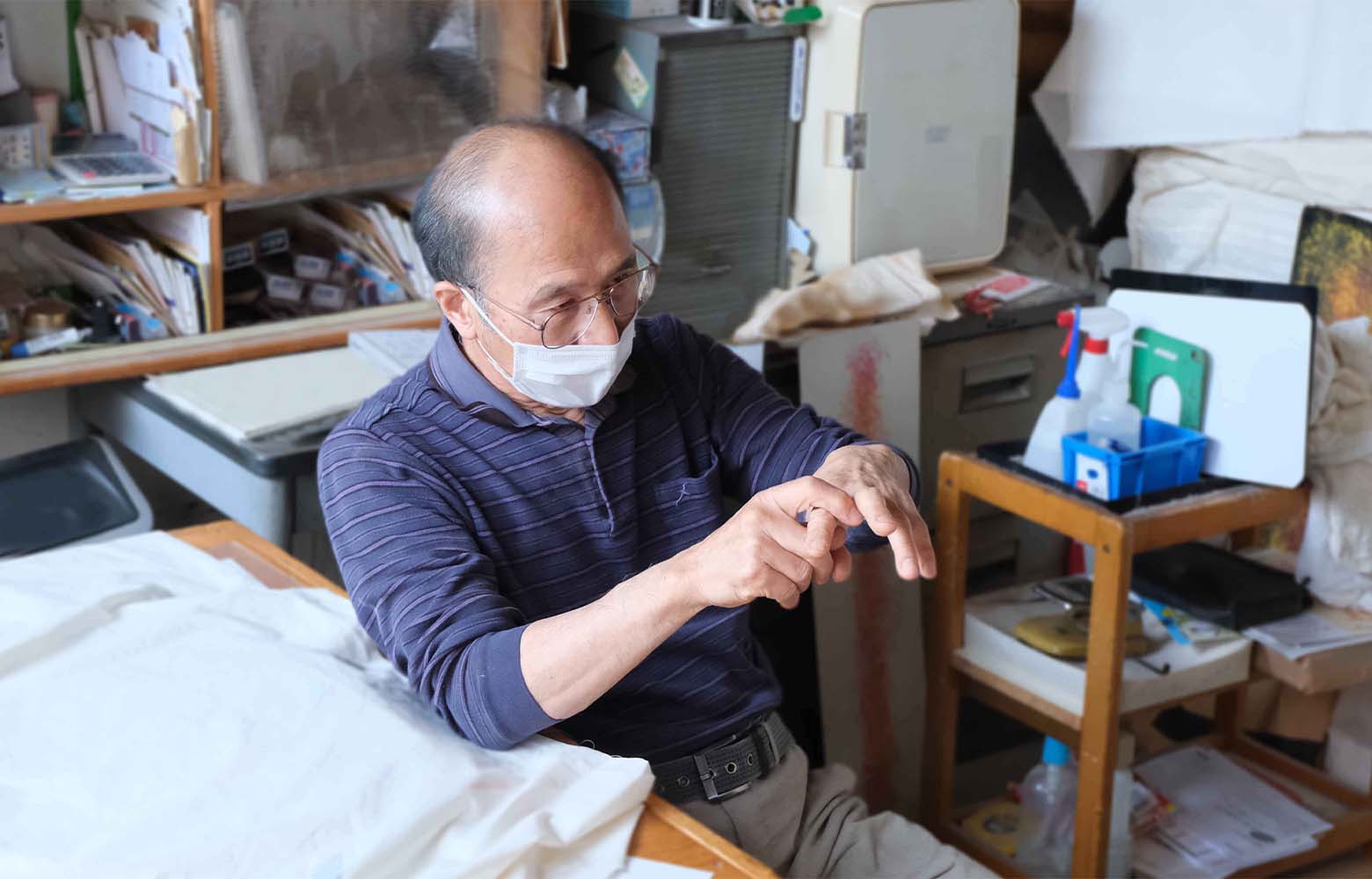
Interview
What is the manufacturing policy of Suzuki Toshiyuki Weaving Factory,
which weaves fabrics on old museum-grade machines
The Enshu region, which includes Hamamatsu City in Shizuoka Prefecture, has long been known as the "City of Textiles" for its cotton textiles, and even today there remain many factories that produce unique textiles. President Toshiyuki Suzuki of Toshiyuki Suzuki Weaving Factory continues to produce high quality fabrics using old-fashioned machinery and not focusing on productivity, taking advantage of his skills and experience in the region. We visited the factory and asked him about his passion and thoughts behind his work.

A couple with a loom half a century old
—— First of all, may I ask how the factory came to be?
Initially, I started working at another textile factory in Hamamatsu. However, the factory closed down after one year, so I did another apprenticeship at another factory for about four years, and then started a factory here, the same size as it is now. That was in 1975, so we have been in business for 46 years this year. Originally, my parents were in the business of gluing thread, and my mother was in the business of winding thread from a skein to a tube, so thread was always around me. My father passed away when I was in the sixth grade of elementary school, and I was having a hard time making a living from the tubemaking work my mother was doing, so I started weaving small width kimono fabrics, which were more profitable, and I found myself in this world of thread. I think it was a natural progression that I decided to start my own business. Until recently, I was doing a lot of work introduced to me by my uncle, and I was allowed to stay on until the very end, when the company was about to disappear.
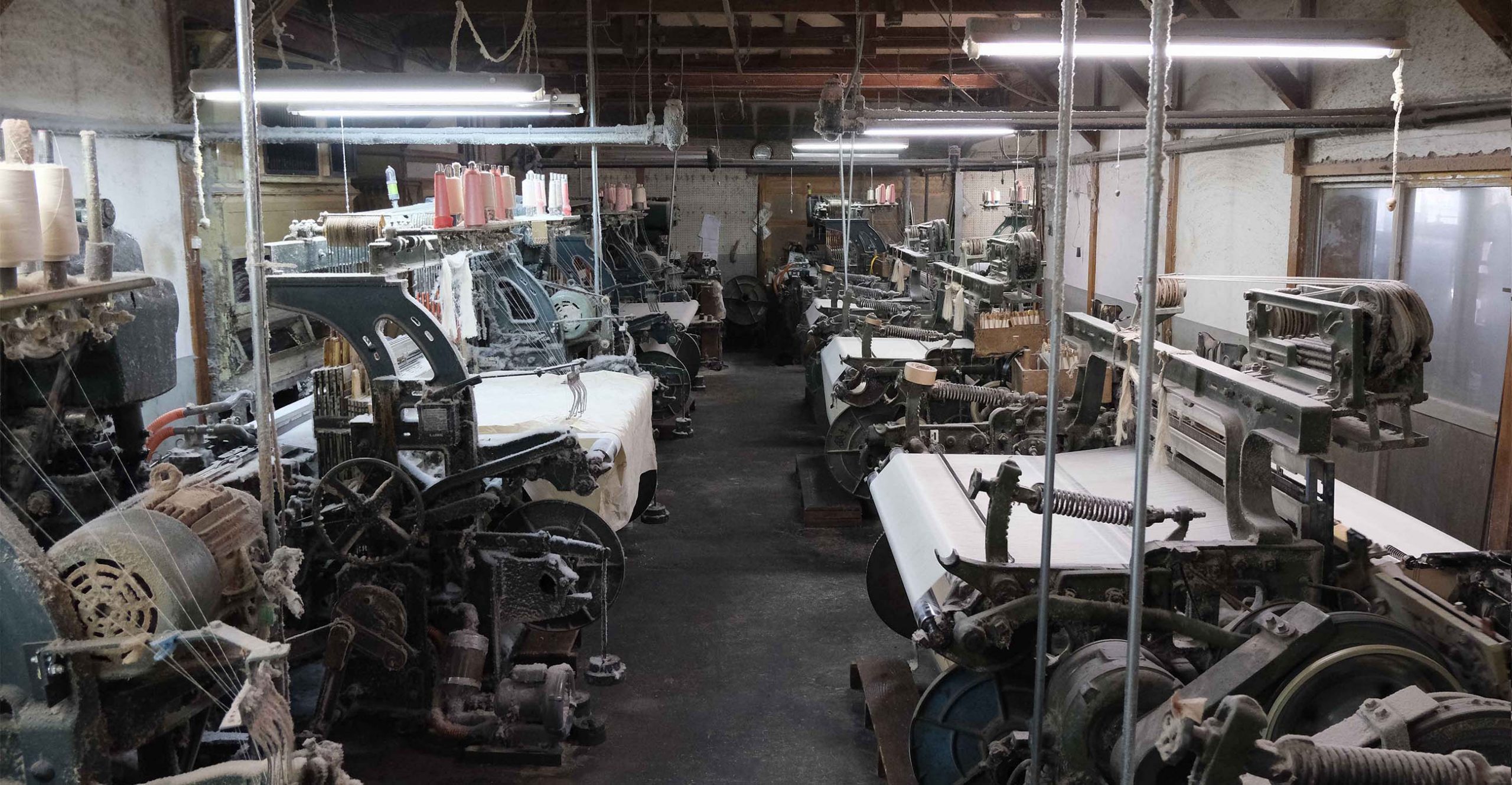
—— There were several looms in the factory, how many other employees are there?
A couple for a long time. All the time.
—— It must be very difficult for just the two of you to operate so many machines. In particular, there seemed to be a lot of old looms and machines in the factory; how old are they?
We also brought used looms that were used by another company, so some things are probably more than 50 years old. I think some of the machines are still here. We use a model called TOYOTA G3, which is the name of an old TOYOTA company. We are concerned about maintenance and breakdowns because the machines are so old, but we are getting by. Four TOYOTA shuttle looms (*1) remain here. There used to be 10 of the same looms in the past, but about 20 years ago, six of them were replaced with rapier looms (*2). Unlike ordinary rapier looms, we introduced a "modified rapier loom" based on the 100T Sakamoto-type loom. Technically speaking, the cup change (*3) part of the Sakamoto loom, which was originally a shuttle loom, was converted to a rapier loom by modifying it so that the yarn delivery device comes out from both sides.
(*1) A machine in which a tool called a shuttle is passed between the warp threads to drive in the weft yarns and weave the fabric.
(*2) Machines that do not use a shuttle, but instead use a yarn delivery device called a rapier to drive in the weft yarns and weave the fabric.
(*3) Replacing the spool of thread in the shuttle when the spool runs out of thread.
—— Some of them are museum-grade, aren't they? What is the reason for using such old machines?
The fabric has great characteristics. When I use this TOYODA G3 loom, the fabric is very soft. Other manufacturers' looms, such as Tsudakoma's, make the fabric stand up with a "ping! but when woven on our old machine, the fabric becomes "squishy". Even if the structure of the fabric is the same and the process and settings are the same, the difference is immediately apparent when you touch it. This unique softness is the characteristic of this loom. I have always liked things that are a little different from others. When I introduced the modified rapier machine I mentioned earlier, I was tempted by various other models at the time, but this one had a more interesting appeal, and in the end I decided to introduce the modified rapier machine. Modification, in other words, the old machines are good because it's a world where you can modify them yourself. With state-of-the-art machines, they are computer-controlled, and you can't get into the details, can you?
—— I see. So the reason why you dare to use old machines is because they can be modified.
Continued use of old machines means
—— What do you pay attention to when you are running the loom?
It can't just keep moving and leave it running, because it doesn't stay running all the time once you press the button. For example, a machine is held in place by bolts, but the bolts always loosen while the machine is running. And the vibration of the machine's movement can wear away parts little by little. I always check to see if everything is okay. I always check to see if everything is okay. I once went on a trip for about a week, and I left the machine to my Ka-chan. Naturally, I tightened the bolts before we left, but when we came back, I found that they had come loose. Old machines are difficult to manage. That's why it's important to manage them. Management is important, after all.
—— It's hard to keep an eye on them. Are there any other things you are trying to do?
It is a matter of adjusting the machine to match the yarn. Different yarns produce completely different weaves. So I change the timing of closing the opening, increase or decrease the width of the opening, and adjust the machine this way and that. I adjust the machine here and there. I adjust it to suit the weave each time. There are many parts to tweak, and there are many ways to do it. Of course, there are times when we have a hard time and things don't go as planned. But we don't just say, "I can't do it, I can't do it," we say, "I want to do something about it," and then we tweak the machine. The result is experience. Sometimes you mess up too much, but that is also an experience. I want to be someone who dares to do that.
—— The experience you have accumulated so far allows you to make great weaves.
Even so, it is difficult to achieve 100% success because various problems occur even when we think we are doing the same thing. Working with old machines is hard work, but it is also more rewarding and interesting.
—— I see. I could feel Mr. Suzuki's passion for weaving cloth and looms.
Creative Spirit of Enshu
—— I have the impression that many people in the Enshu production area, including Mr. Suzuki, are creative in such details. Is this a characteristic of the Enshu production area?
There have not been many corporate organizations in this area for a long time. There are many people who work on their own, and those who like to tinker with machines have been doing it for a long time. There are many such people in Enshu. Because what can be done within a corporate organization is limited, it is easy to create fabrics that are unique, such as fabrics with special characteristics. I think that is part of it. Well, you can't make money just by doing various things you like (laughs).
—— Our renment project also started with "thinking about the next 100 years". We would like to continue to preserve these thoughts and techniques.
Most of the people doing this kind of work in this area are of our generation. It's not that there aren't people from a little younger generation...but even if there are a few young people, they are in their 40s, and there really aren't that many young people. Looking to the future, the industry itself will not be able to survive without people. It would be nice if there were some really young people who wanted to do it, but there aren't very many. Thanks to you, the two of us are still going strong, but...there are no successors. And you have to have a certain level of salary for the young people...
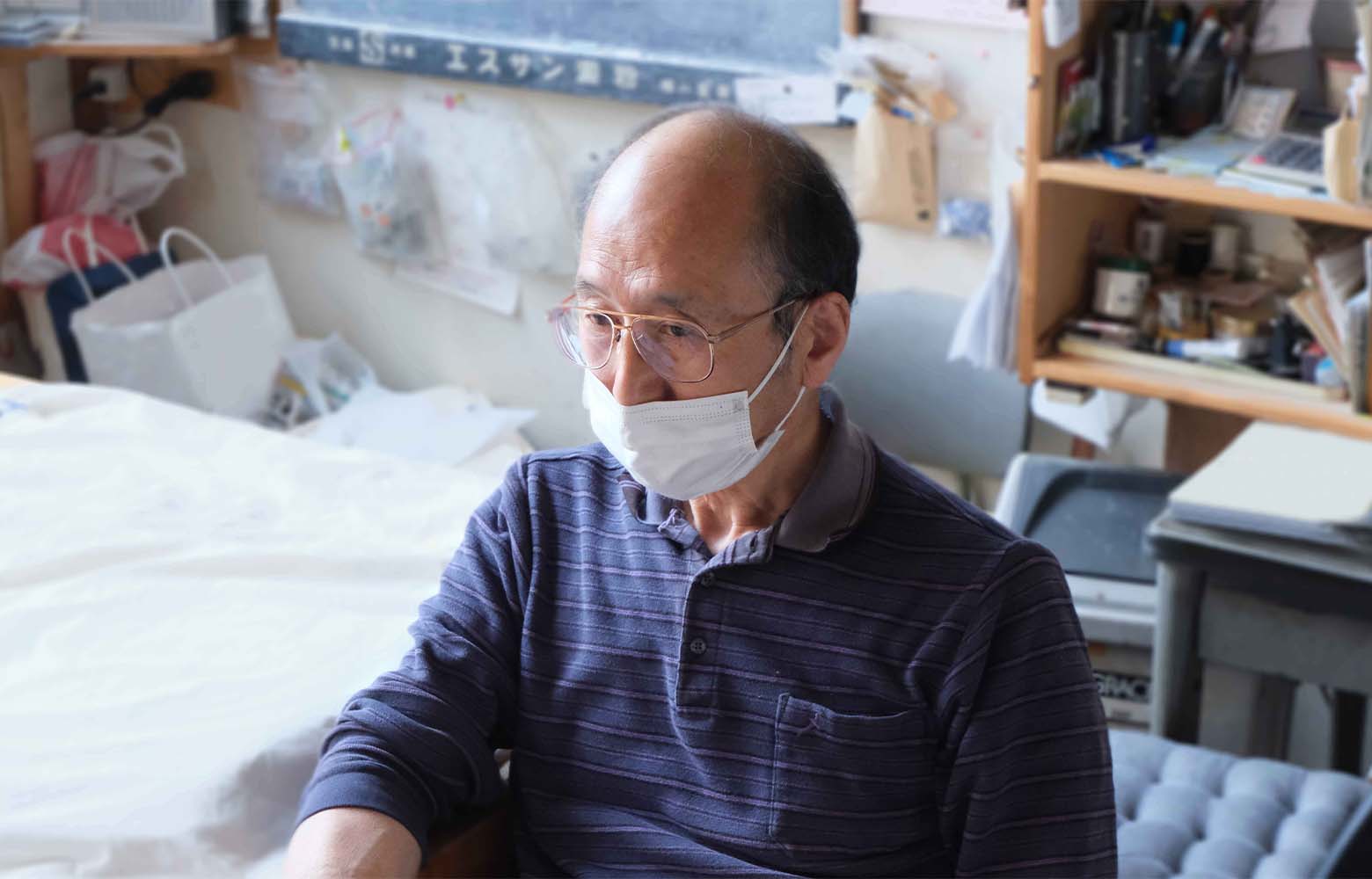
—— It might be a good idea to give young people a chance to see the factory and realize that "this product is made because that person put his/her heart and soul into it.
If you look at the process alone, it is 80% or 90% tedious work, and not many people want to do it, but it would be good if people knew that they can make good products if they devise and think about various things on their own. There is no such thing as an interesting job from the beginning, and any job that is done out of obligation is uninteresting. It is important to make work interesting, not to do interesting work. I think that is important.
—— Finally, we were able to receive some words that epitomize Mr. Suzuki's work. Thank you very much for taking time out of your busy schedule to talk with us.
(End)
Profile
-
Toshiyuki Suzuki(Toshiyuki Suzuki Weaving Factory President)
Born in Hamamatsu City, Shizuoka Prefecture. In 1975, he set up a weaving factory on the premises of his home, and since then, he and his wife have handled 10 old looms. This time, renment sought a unique texture that could only be achieved on old looms and wove a broadcloth using sea-island cotton.
-
renment journal vol. 003
What is the manufacturing policy of Suzuki Toshiyuki Weaving Factory, which weaves fabrics on old museum-grade machinesDate: 22.09.2021
Interviewer: Yuki Shimizu
Text: Yuki Shimizu & Shinji Kobayashi
Photo: Shinji Kobayashi
Archives
-
Interview
The magnificent natural beauty of Shinshu, its flora and fauna,
and the lives of its people. How to enjoy Omachi City through the lens of… -
Interview
This is the story of a person who continues to challenge the cotton fields in Omachi City in Shinshu,
a snowy region surrounded by the beautiful Northern Alps.













